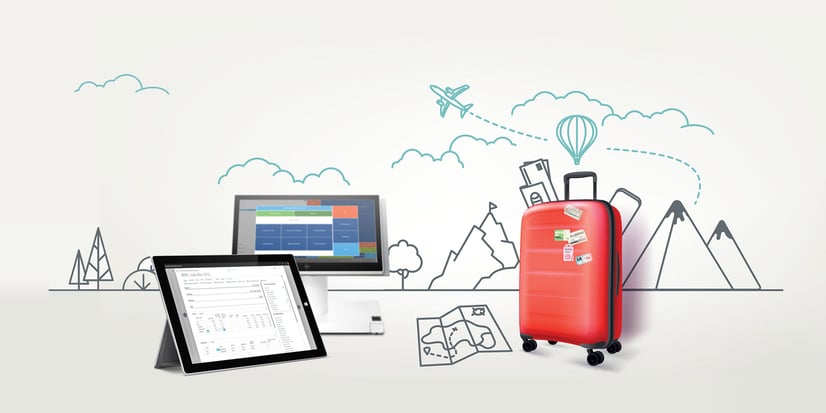Trains, planes and ferry boats: finding the right software solution for each travel retail business

Traveling is a key part of human nature. We have always been on the move, even if our reasons for traveling have changed over time. Today more and more people can afford, and decide, to travel for pleasure. At the same time, there is a large mass of people who move every day to commute to work, and despite all talks of smart and agile work, I don’t expect online technologies to drastically change this. Consider that in the United States alone, 143 million people commute to work every single day. Take this number, and multiply it for five to six times per week, for 52 weeks. Compare it to the number of worldwide international tourist arrivals (1.4 billion in 2018, according to tourism statistics by UNTWO): in comparison, this figure begins to look quite small.
This means there are big – and partially still untapped – opportunities for travel retailers to sell to commuters: travelers who, unlike holidaymakers, are regularly on the move, have little time to waste, and may visit a store often enough to be interested in loyalty options.
Selling to train passengers: guarantee speed, resilience, and no out of stocks
I recently had a busy week with meetings and workshops in different cities, which forced me to use a number of different transportation methods. My journey started in Berlin, Germany, where I took a train to Hamburg. The Berlin main station is like a shopping mall, with a clear focus on travel retail and hospitality. There are over thirty shops selling all kinds of wares, plus six bakeries and 24 among restaurants and cafes.
As a frequent traveler, and as someone who has been involved in travel retail projects for over 20 years, I immediately started to reflect on the specificity of train station travel retail compared to, say, airports. When you board a train there is no check in, and no need to be at a gate well before departure. Trains arrive, people board them in a few minutes, and then the trains leave again. No final call, no time wasted. Retailers and restaurateurs need to keep this in mind when designing their concepts and selecting a software solution for each location. Speed is of the essence, but the importance of getting a resilient system that offers a smooth customer experience should not be underestimated, either. Optimal replenishment is also an important factor for travel retailers, as the majority of their customers make purchases during their travels, and won’t necessarily be back at the same location shortly. Being out of stock, therefore, often means losing a sale.
Selling to ferry guests: make it a unified shopping experience, from the port to the sundeck
From Hamburg I proceeded by train to the port of Kiel, where I boarded a ferry that took me to Gothenburg, Sweden. This is an overnight route, and the vessels are like hotels: they have everything needed to create a great journey experience for their guests. Passengers are invited to have a good time in the restaurants and bars, and enjoy some shopping on board. The company ensures all guests are well aware of these spending opportunities by placing a shopping catalogue in the cabins, and clearly visible special offers in the bars and on the decks. A customer loyalty program is also available, to encourage further spending once aboard. When booking the journey, guests are also immediately alerted to the option of pre-booking dinner, breakfast, plus a number of packages. For many of these, guests can also choose to enjoy the food where they prefer, in the restaurant, in their cabin or on the sundeck.
My experience working with cruise and ferry lines has taught me that this combination of requirements is best addressed with end-to-end, unified commerce management software. Ferries need wide functionality – inventory management, replenishment, member management, flexible promotions, pre-booking, route-management, just to name a few – to run their business effectively. It’s only when all of these functionalities are packaged inside a single software solution, and share information smoothly and instantly, that companies can create a single, seamless customer experience for all guests.
Selling to airport travelers: manage routes and exceptions
I returned to Hamburg by plane. As I was going to a birthday party that evening, I decided to buy a bottle of champagne to bring as a gift. I had planned to buy the champagne in the Duty Free store at Gothenburg airport. A clarification: when traveling within the EU, there is no real duty free. Instead, we pay local taxes. Still, travelers can still get a good deal, as prices can vary wildly among countries depending on VAT rate differences, excise taxes but also local promotions and offers. For this reason, the retail system used in the airport shop needs to include and combine all different sorts of rules and regulations. If the store serves domestic gates or EU gates only, specific regulations must be considered. However, if the store also serves gates from which planes leave for countries outside of the EU, the matter becomes much more complex. On top of that, even in a pure duty free area there can be exceptions that the system needs to allow for – for example, if a member of the ground staff buys a sandwich for lunch. The retail solution used needs to be very flexible to cope with all the different scenarios.
As a passenger, when I make a purchase at an airport I need to present a boarding pass, which contains all the necessary information for the system. And that’s exactly what I did in Gothenburg. Armed with my bottle of champagne and my ticket, I went to the checkout. The cashier scanned my boarding pass – and that’s when the system told us that my route meant I couldn’t buy any alcohol. So much for my birthday gift! I started to think I wouldn’t be able to bring anything, as stores in Hamburg would be closed by my arrival. That’s when I remembered the train station – shops are open longer there.
My flight included a short connection at Düsseldorf airport. As I got off the plane there, I learned that my flight to Hamburg had a slight delay – and there went my plan to buy the bottle at the train station. Luckily, a duty free store close to my new departure gate came to my rescue. I managed to buy the champagne, and the day – or better, the evening – was saved.
As someone who travels for work, and works with travel retailers, I felt quite puzzled by the fact that I couldn’t buy alcohol at the airport in Sweden on my way to Germany, but I could buy alcohol when traveling on a ship on the same route. Just one of the many complexities of travel retail, and one of the many reasons why extreme flexibility is so important in software solutions used in shops catering for travelers. Finally, a useful tip for those in need of a last minute gift. Many petrol stations are open 24/7, and at desperate times, these might be the places that save your day with a bottle of wine, box of chocolate, or bunch of flowers. Just don’t get caught bringing a bouquet from a petrol station as a gift on your wedding day: in life, as in retail, planning ahead and being ready for all things usually pays off.

